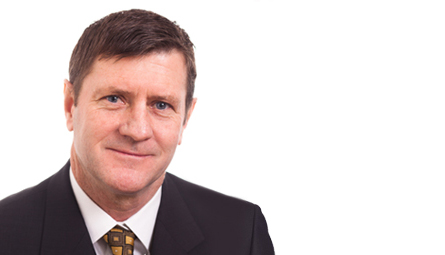Many have read about Cornwall Capital (I wrote about them awhile back), a firm that successfully profited from shorting subprime CDS. Those who enjoyed the Cornwall Capital piece are in for a treat. Below are highlights extracted from an Eurekahedge interview with Richard Hollington of 36South, a hedge fund that also specializes in profiting from volatility and tail risk. This piece is a little longer than our usual articles. There is a lot of good commentary below on how to source, execute, size, and manage portfolio hedges. However, reading this article does not a hedging expert make. In other words, I don’t recommend trying this at home.
Hedging, Derivatives, Fat Tail, Barbell, Sizing, Expected Return, Volatility
“The underlying philosophy is that markets are rational most of the time but 5% of the time rationality gets thrown out of the window, whether because people have made money too easily and become complacent or have lost money too quickly and are so distressed that they are off-loading assets below their intrinsic worth. The emphasis of this approach is market psychology. We search for fear, greed, hysteria and mania. We sell into a bubble about to burst and buy into a post-crash recovery. Bubbles as we know, can take time to play themselves out over an extended period of time and their turning points are normally associated with high volatility. This makes the method of investing in an opportunity critical. Normally it is better to wait until the bubble is bursting as the markets tend to go a lot higher or lower than one thinks. The downside to this is that the move might be over in a short period of time.”
“Our investment methodology is to BUY ONLY long dated “out-of-the-money” options. This methodology has some excellent features…these options can return multiples of the original investment. We look for options that have the potential to return between 5 and 10 times the original investment. Because of their high reward characteristics, only 10-20% of the fund need be invested in these options to achieve our target returns of 15-25%. Our worst case loss is thus known, being the amount invested in options…Our rationale here is that one can never get killed jumping out of a basement window!”
“We zero in on…situations by using our in-house developed ‘Quadrivium’ Methodology. Quadrivium literally means where four rivers meet and a strategy which conforms to criteria required in each of the four circles in our approach will be selected to form a portion of our risk portfolio. The four criteria are used in conjunction with each other in order to ‘ensure that one reality respects all other realities’ as Charlie Munger put it so well. These criteria are:
- Volatility has already been covered. We ensure the option (using volatility as a proxy) is cheap enough to provide the leverage we require for the level of risk.
- The next criterion is to look at the technical picture of the market to seek confirmation that there is potential for market movement to the extent and in the direction that we require to attain a multiple return on the option price.
- The next criterion is fundamentals in that market/asset/option to corroborate our view. We have developed a framework of economic indicators that we monitor in each of the markets we have selected to trade. We are specifically looking for flaws in the structure of markets which are caused by government policy and supply demand imbalances.
- The next step in the process is based on the sentiment prevailing in the market that we wish to trade. Sentiment often becomes deeply entrenched at market tops and bottoms to the extent that supporters of the status quo can become aggressive in defense of their beliefs. In order to gauge the prevailing sentiment in the market we use Internet searches for key words and couple this with feedback obtained from diverse media coverage. These media opinions can reflect ‘irrational exuberance’ or deep-seated pessimism on a particular stock, index, commodity or currency. These quotations from seasoned professionals in the financial markets encapsulate the essence of this driver of our trading philosophy.”
“Since we know exactly what the current option portfolio is worth we can safely say that this is the absolute worst-case meltdown in the fund based on market risk. This would be an extremely unlikely scenario because long dated options always have some time value and it would mean all positions have moved against us in all asset markets and volatilities have collapsed at the same time. We manage each option on a stop-loss methodology. The stop-loss is based on the number of times the initial option premium multiplies. The first stop is instituted when the option premium has increased three fold. At this level a 60% stop on the option price is registered. As it moves to four times, the stop is tightened to 50% and so on until a maximum of eight times when the stop will be 10%. At this point in time the option has earned the right to discretionary stop-loss status as long as it does not hit the 10% in place. A profit target is then calculated which is based on a three standard deviation move above the 200-day moving average. We will also sell options which have only a year to run if they have not achieved the minimum 3-fold increase and are still worth something.”


